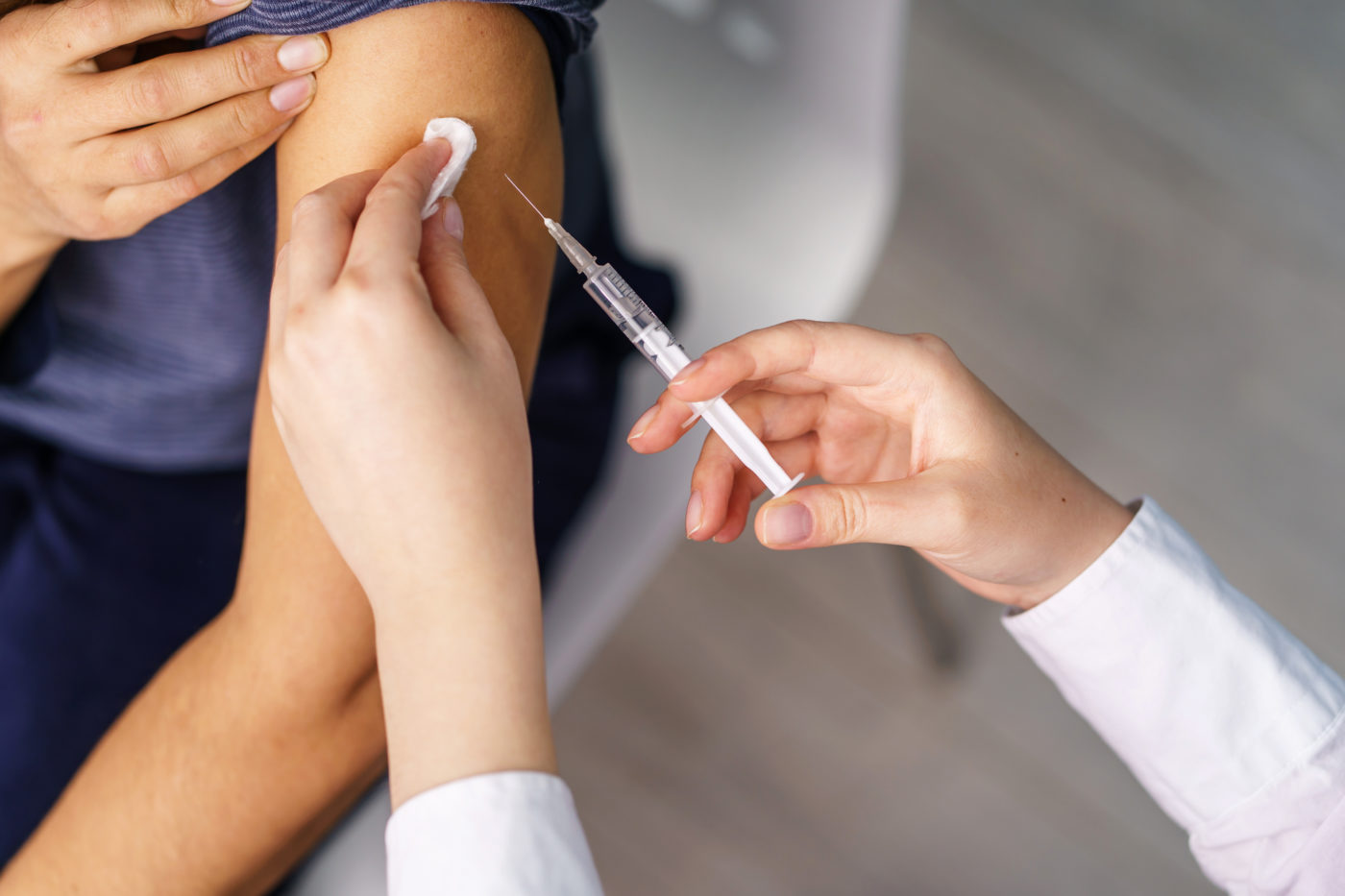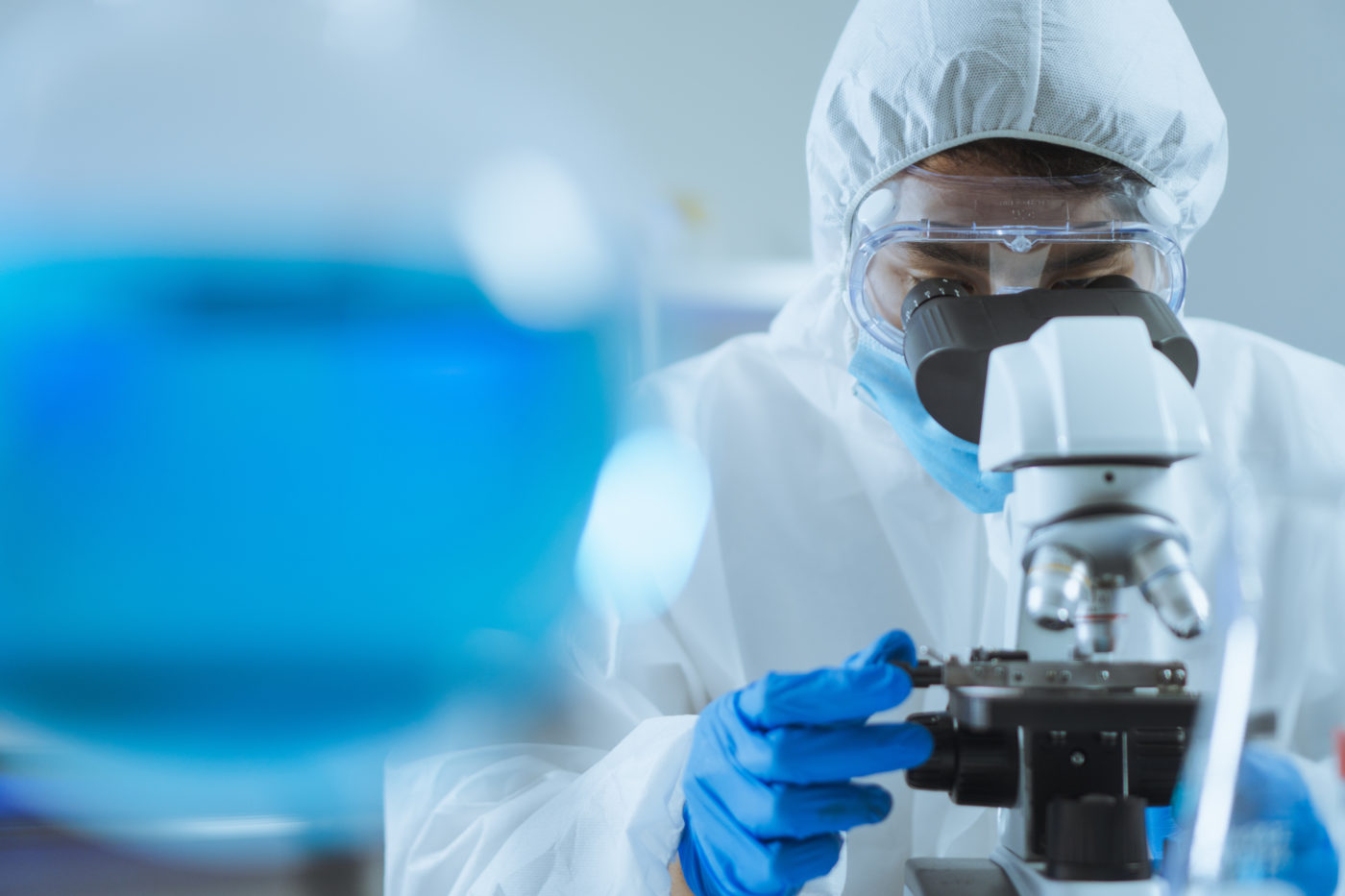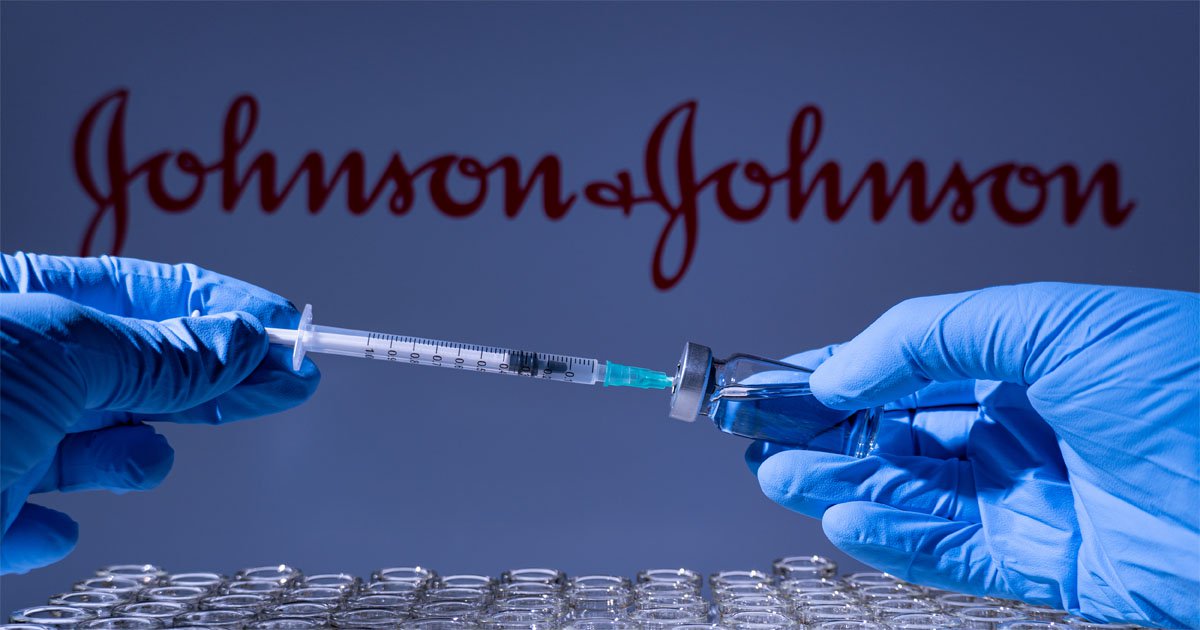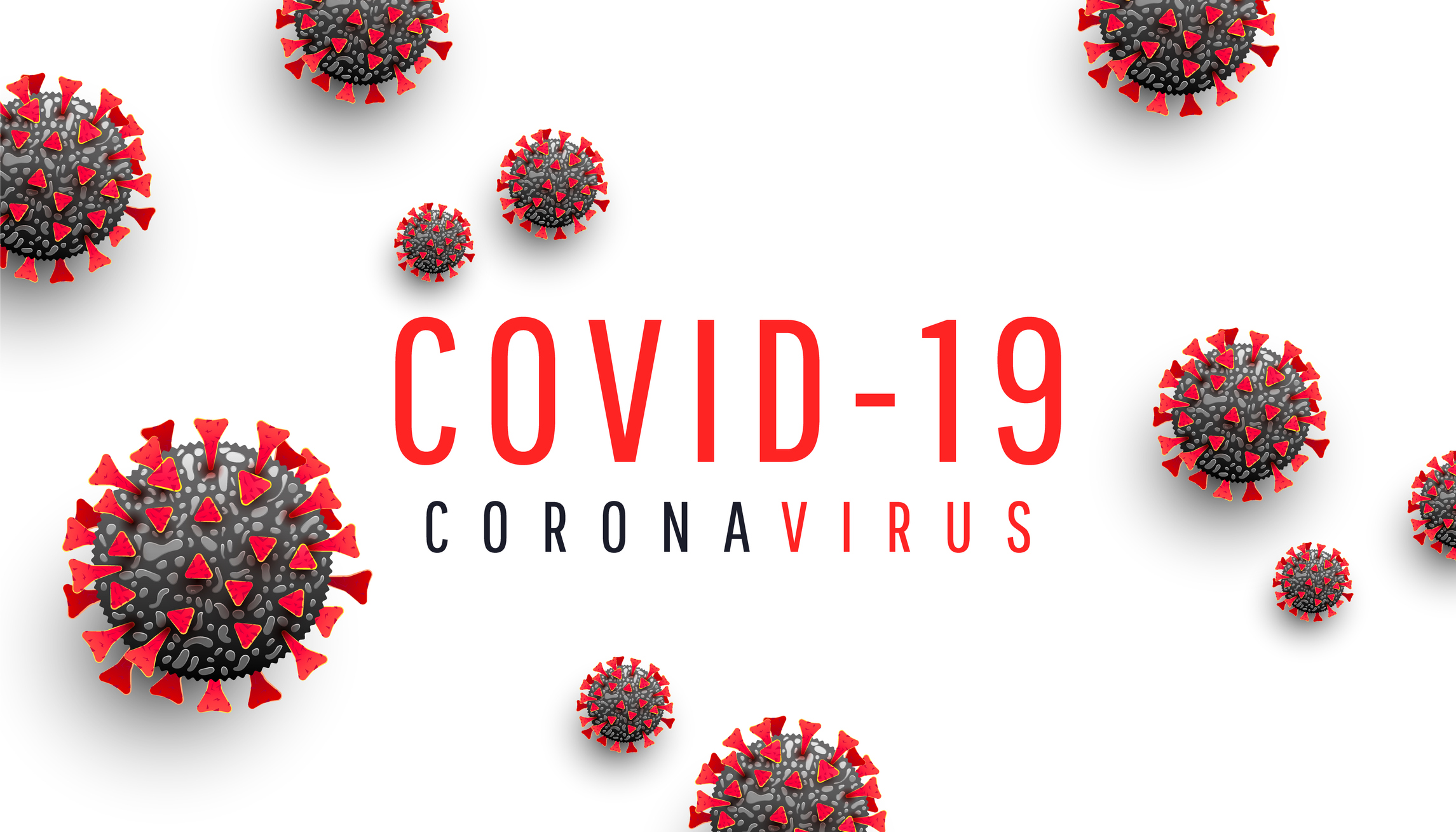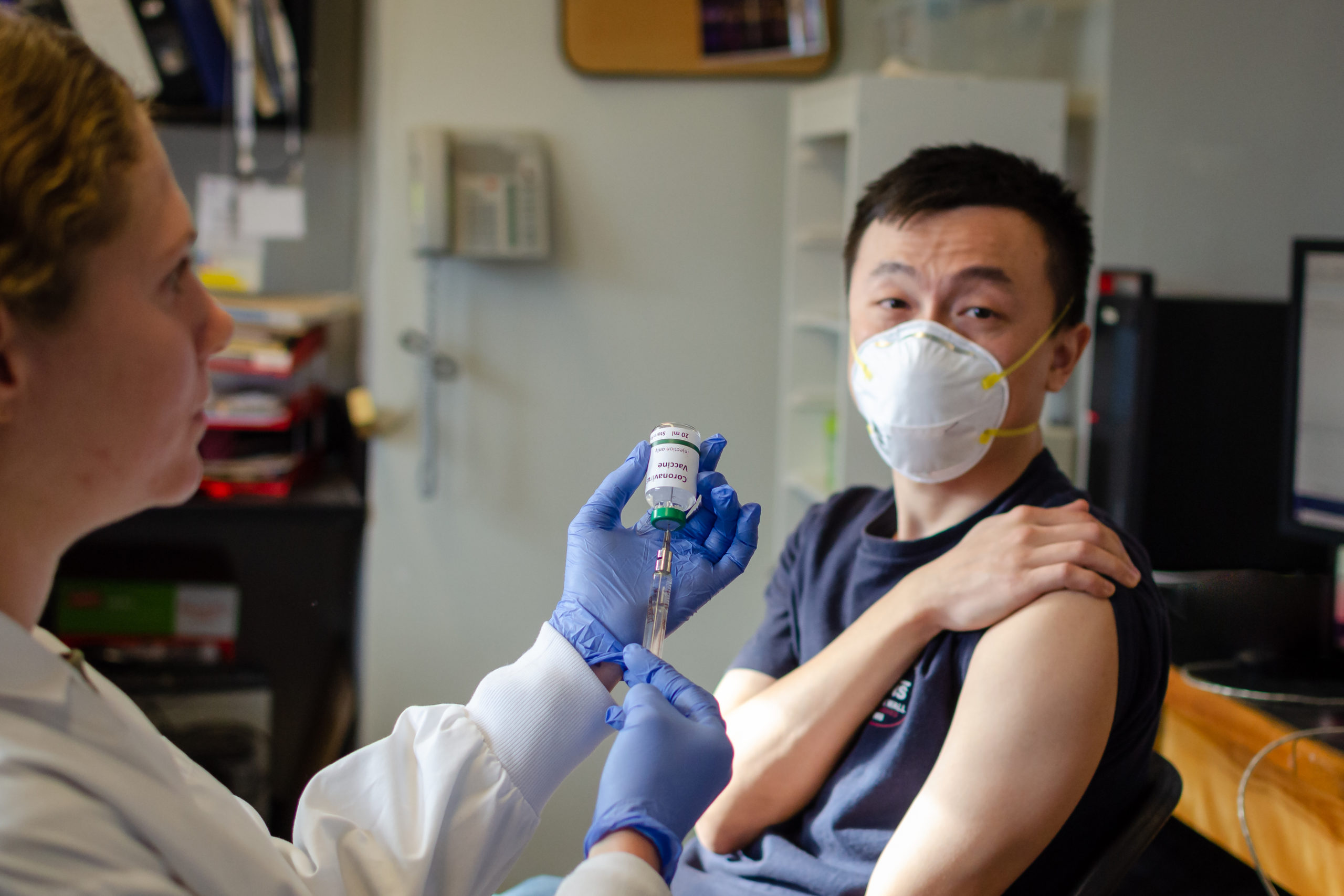On November 26, the World Health Organization (WHO) identified the emergent B.1.1.529 SARS-CoV-2 strain, also known as Omicron, as a “variant of concern.” Just two days prior, Omicron was newly isolated by South African virologists in Botswana, instigating new and widespread misgivings about the future direction of the COVID-19 pandemic.
After the discovery of this new variant was announced across various media international outlets, it became clear the Omicron strain had already started to crop up in Europe. Two cases have been detected in England, another two in Germany, and at least one case was identified in Belgium and another in Italy at the time of this writing.
News that variant had already spread sent global financial markets plummeting as much as 3% on Friday, November 26, while new travel restrictions were almost immediately imposed on several southern African nations by various governments in the West.
As of now travel US travel is restricted for non-US citizens arriving from South Africa, Botswana, Zimbabwe, Namibia, Lesotho, Eswatini, Mozambique, and Malawi. Updated “do not travel” advisories have been issued from the US State Department, informing travelers not to visit the African countries named above.
International media coverage has since projected a strong sense of urgency concerning the Omicron variant. Yet withal, scientists admit that they’re still in the early stages of understanding its potential impact. There is much speculation that the variant is more transmissible, however, because of its highly mutated spike proteins. More research is needed before this data can be confirmed by public health officials.
Scientists are expected to fervently continue probing the new variant over the coming weeks. Their primary objectives will be to determine how quickly the virus spreads, assess its severity of virulence, and apprehend how evasive Omicron is to protections provided by the current batch COVID-19 vaccines.
As the inquiry into the Omicron strain continues to evolve, more detailed information should emerge. Here is what medical officials are conveying to the public thus far.
Latest Findings on This New Omicron Variant
What’s unusual about Omicron is not that it’s a new strain. According to the WHO, “All viruses, including SARS-CoV-2, the virus that causes COVID-19, change over time” and “most changes have little to no impact on the virus’ properties.” The WHO designated Omicron as a “variant of concern” however because it represents the most heavily mutated variant of SARS-CoV-2 discovered to date.
While many sources in the international media speculate that the Omicron variant is more transmissible than Delta, with which it shares mutation characteristics, it’s too soon to tell. Omicron is highly mutated, yet similar to Delta, which is 40% to 60% more transmissible than the Alpha variant and nearly twice as transmissible as the original SARS-CoV-2 isolated in Wuhan, China. Most virologists concur that Delta’s heighten transmissibility explains why it became the dominant SARS-CoV-2 strain.
A grasp of how the COVID-19 virus has evolved in the last 18 months is essential to apprehending the status of Omicron today. The original SARS-CoV-2 was initially isolated from the oropharyngeal sample obtained from a patient with the first laboratory-confirmed infection in Korea. A 2020 paper in The Journal of Korean Medical Science affirms that “phylogenetic analyses of whole-genome sequences showed that it clustered with other SARS-CoV-2 reported from Wuhan.”
The recent analysis of the Omicron variant revealed over 50 mutations from the original virus. Of that number, 32 of those variations are on the spike protein, the spiny nobs on the outside of the SARS-CoV-2 virus. Spike proteins are what help the virus cohere with and ultimately invade human cells. All three vaccines currently authorized for emergency use in the United States use these same spike proteins as means of inducing protective antibodies to the cells.
The Delta variant displayed only nine mutations against the new variant’s 50, over half of which impact Omicron’s spike proteins. Scientists expected the SARS-CoV-2 to mutate, but the wide constellation of mutations found in the Omicron variant makes it substantially different from all the previous SARS-CoV-2 strains. So it begs the question, how did the Omicron variant come about? Some virologists believe mutations evolve through animal hosts while others hypothesize that variants like Alpha originated in persistently infected patients suffering from “Long COVID.”
Dr. Anthony Fauci, director of the US’s National Institute of Allergy and Infectious Diseases and chief medical advisor to the White House, admitted to George Stephanopoulos on ABC’s This Week on Sunday that Omicron’s “mutations would strongly suggest that it would be more transmissible and that it might evade some of the protection of monoclonal antibodies and convalescent plasma, and perhaps even antibodies that are induced by the vaccine.” What’s referred to here is Omicron’s viral fitness, or the replication rate showing how quickly a virus can reproduce itself.
Delta’s replication rate was faster than Alpha, and so it follows that Omicron, too, will display an enhanced viral fitness. Virulence, on the other hand, is determined by the overall viral load carried by infected people. It’s also a strong indicator of the disease’s symptom severity. Those afflicted with the Delta variant were shown to create and shed more viral load which also influences rates of transmission.
Virologists hypothesize that Delta’s heightened transmissibility is attributable to mutations in the spike protein surrounding the SARS-CoV-2 virus that contributed to more efficient binding to its host. Such a mutation may indicate a variant that’s more evasive to neutralizing antibodies, either naturally produced or induced by vaccination. Multiple studies illustrate that the current batch of COVID-19 vaccines is less effective in combating the Delta variant.
The wide consensus at the moment is that Omicron is cause for concern because it’s another highly mutated variant of SARS-CoV-2, like Delta. Presuming Omicron follows the same trajectory of Delta, one of enhanced transmissibility and increased immune evasion, more people are at greater risk of infection. Not only were Delta infections more widespread, an even greater portion of those infected resulted in hospitalization than those who contracted early variants of SARS-CoV-2. If Omicron finds an improved ability to enter human cells, then it is postulated that more severe disease could follow.
The African continent, during this entire pandemic, has been observed as a bit of an anomaly because both COVID-19 cases and rates of morbidity have been relatively low, despite less than 10 percent of its population being vaccinated against the disease. Overall, cases in South Africa remain low, relatively speaking. But, according to the Associated Press, more than 90% of the 2,828 new COVID-19 cases are attributable to the Omicron variant.
South Africa’s rate of vaccination uptake is higher than other nations within the continent at 40%. That said, a marked increase has been reported concerning younger unvaccinated patients in their 20s and 30s seeking treatment for moderate to severe disease.
Rudo Mathivha, head of the intensive care unit at Soweto’s Baragwanath Hospital states that some of these patients even needed intensive care, and this, according to Mathivha, is indeed attributable to the low vaccination rate in South Africans under 40. She expressed concern that “as the numbers go up, the public health care facilities will become overwhelmed.”
Udben Pillay, conversely, speaking on behalf of South Africa’s Department of Health conveyed that South African cases assumed to be Omicron were ostensibly mild while acknowledging “it’s still the early days.” Pillay confirmed most patients they were seeing “presented with a dry cough, fever, night sweats, and a lot of body pains” and that “vaccinated people tend to do much better.”
Dr. Angelique Coetzee of Pretoria informed the press that her patients’ symptoms were atypical, with most of them presenting extreme fatigue and not the loss of taste and smell she associates with the COVID-19 infections she previously treated. Coetzee stated that 87% of the patients coming in had not received a COVID-19 vaccination.
The Guardian, however, acknowledges that only about a quarter of South Africans under 34 have accepted a complete stage of vaccinations. Subsequently, that ratio closely aligns with the vaccination status of the general South African populous.
In that same Guardian article, University of St Andrews infectious disease physician Dr. Müge Çevik affirms unequivocally that “all the statements about severity of Omicron – either in the direction of more severe, or milder – are unreliable at this point as they are based on anecdotes or very little data.
Even results from the first epidemiological studies will likely be biased as there are major challenges when inferring causality of disease severity with new variants – especially now that many people have acquired immunity, either via vaccination or infection.”
Because each new variation of SARS-CoV-2, or any coronavirus for that matter, can indicate both more and less disease, it’s essentially impossible to arrive at any reliable conclusions. At such an early stage, virologists essentially can’t determine how the Omicron will impact the immune system.
Richard Lessells, an infectious-diseases clinician at the University of KwaZulu-Natal in Durban concurs, “There’s a lot we don’t understand about this variant.” At a press briefing organized by South African health officials on November 25th, he stated that “the mutation profile gives us concern, but now we need to do the work to understand the significance of this variant and what it means for the response to the pandemic.”
As researchers are still in the nascent testing phases, they’re still forming a consensual opinion concerning Omicron’s ability to evade infection-blocking antibodies. Computer modeling has led to speculation that the new variant could avoid immunity conferred by the body’s T-cells. It will be at least another two weeks before any palatable results from the study are rendered.
While South African doctors have repeatedly said that the majority of their patients have not received the Johnson & Johnson, Pfizer–BioNTech, and Oxford–AstraZeneca inoculations, the earliest cases were detected in people who had received these vaccines. Hong Kong health officials diagnosed two South African flight travelers who had taken the Pfizer jab and tested positive for testing positive for SARS-CoV-2.
One traveler tested positive for COVID before quarantining while another contracted it in Hong Kong during the mandatory quarantine period. News reports do not specify if the pair were infected with the Omicron variant or not. Because the PCR tests deployed for domestic use don’t isolate variants, an additional lab analysis test must be conducted before there is any determination of a variant’s type. There have been substantial reports of reinfections and breakthrough cases among the inoculated in South Africa.
Given the information available today, it is widely theorized, though not formally demonstrated in peer-reviewed studies, that Omicron’s spike protein properties point to a more infectious SARS-CoV-2 strain. The main task for scientists now, however, is finding a clear assessment as to how severe the symptoms are in those infected with the Omicron strain and whether or not it will out complete prior variants to become dominant.
The WHO established that the first known Omicron case was collected from a specimen on 9 November 2021 through South Africa’s advanced detection system. In the US, Delta has remained the dominant strain for several months, consisting of 99.9 percent of SARS-CoV-2 infections in the United States. The discovery of the new Omicron strain directly corresponds with a 1,400 percent spike increase in SARS-CoV-2 cases in South Africa over the past two weeks.
Despite limited data, alarms have been justifiably raised in the South African clinical research community. If this Omicron variant becomes a dominant strain, its high transmissibility would effectively result in another severe wave of disease throughout the globe. Should Omicron prove to evade immunity protections, it has the potential to surge into a unique pandemic onto itself.
What Are Governments Doing to Contain the New Variant?
Ostensibly convinced of Omicron’s high potential to spread quickly,
Dr. Anthony Fauci told an NBC reporter that “when you have a virus that’s showing this degree of transmissibility and you’re having travel-related cases … it almost invariably is going to go all over.” Concerning government prevention measures, the chief focus at this time seems to be in reducing movement, despite several admissions that travel restrictions have little overall impact on preventing the spread.
CNN’s medical health consultant Dr. Leana Wen acknowledged on the channel that the travel bans have been largely ineffective at slowing SARS-CoV-2, but that they “buy time” and allow health officials to gather more information about emergent variants. President Biden commented that while little is known about the virus, apart from its designation as a “virus of concern.” Biden then stated that “we’re going to be cautious” because Omicron “seems to spread rapidly.”
Presently, the UK, Australia, Israel, France, and Germany have all restricted inbound travel from southern Africa. The South African government protested these measures, citing the travel ban as a way of effectively punishing the nation for advancing genomic sequencing and isolating new variants more efficiently than the countries imposing the ban.
The South African Department of Foreign Ministry reiterated this position in a statement on Saturday, November 28. It’s their stance that “Excellent science should be applauded and not punished.” While the variant has appeared in Europe and Asia, the present travel ban is relegated to countries in Southern Africa at the moment.
In response to the new variant, national officials in the US and Europe have continued to reiterate the importance of vaccination while they now emphasize the importance of engaging a regular staging of booster shots. With high vaccination rates in the West, Biden called on “wealthy countries” to donate vaccines to low and middle-income countries and eliminate proprietary rights on those vaccines, as his administration endorses the position that wide vaccination will eventually reduce the spread and impact of SARS-CoV-2.
In an official Whitehouse briefing, Biden urged all vaccinated adults to seek a booster shot commenting, “for those Americans who are fully vaccinated against severe COVID illness – fortunately, for the vast majority of our adults — the best way to strengthen your protection is to get a booster shot, as soon as you are eligible.” All US citizens six months beyond their second COVID-19 vaccination are eligible for a booster. Those who have taken Johnson & Johnson are encouraged by government authorities to take a second shot of the Pfizer–BioNTech or Moderna vaccines supplied in the US.
In that same briefing, Biden emphasized that “America is leading the world in vaccinating children ages 5-11, and has been vaccinating teens for many months now -– but we need more Americans in all age groups to get this life-saving protection. If you have not gotten vaccinated, or have not taken your children to get vaccinated, now is the time.”
Biden closed his public response to the discovery of Omicron by formally declaring, “this pandemic will not end until we have global vaccinations. The United States has already donated more vaccines to other countries than every other country combined. It is time for other countries to match America’s speed and generosity.” The Biden White House officially endorses a sweeping global vaccination campaign as news of the Omicron variant “reiterates the importance of moving on this quickly.”
But the problem with low vaccine uptake, especially in Africa, is not accessibility alone. Demand for the COVID-19 vaccines in Africa, as in other parts of the world, is low. Last week South Africa informed drug companies to slow delivery of new vaccines because demand for the shots was essentially exhausted.
This request to slow vaccine distribution was despite less than 30% of its adult population being fully vaccinated against COVID-19, according to the University of Oxford’s Our World In Data project. The New York Timesargued in an article published just before the discovery of Omicron that slow vaccine uptake in segments of Europe has contributed to an increase in COVID-19 outbreaks. The Times author went on to opine that “vaccine hesitancy” is the “long tail of populist nationalist movements” of times gone by in these regions.
How Concerned Should You Be About Omicron?
With the Omicron strain having already found several countries in Southern Africa, at least four countries in Europe, and parts of Asia, it can be assumed that Omicron is already circulating in the US. But keep in mind, viral strains generally can’t be detected with a common PCR or rapid antigen test kit one can purchase before air travel. Isolating a viral strain entails a careful lab analysis by trained virologists. These researches then come to a consensus regarding which strain has become dominant based on its infectious properties.
While some have started to call the COVID-19 pandemic an endemic, meaning it will be with us indefinitely like the seasonal flu, many governments around the globe continue to imply, at some juncture, the crisis will “come to an end.”
Dr. Fauci conveyed to The New York Times that, “It’s not going to be possible to keep this infection out of the country. He went further stating, “The question is: Can you slow it down?” In reading between the lines, slowing the spread down does not equate to eradicating it.
And this notion that the virus can only be slowed is important to note because it implies a clear and honest risk assessment must take place if the indeed SARS-CoV-2 cannot be eliminated altogether. Any insinuation that elimination of COVID-19 might be accomplished at this stage places the public in an impossible predicament of trying to overcome a non-overcomable obstacle.
Dr. Ashish Jha, dean of the Brown University School of Public Health does aptly point out in a PBS interview, however, that while “variants come and go… This one is concerning. This one is different. There are a lot of features here that have me and many of us concerned about this.”
Indeed, based on the findings this far, the Omicron strain has mutated dramatically to resemble something vastly different than the original cluster of COVID-19 strains. The onerous falls on scientists, clinicians, and governments to start seeking immediate measures heading off future outbreaks instead of developing medicines that are only partially effective for a limited span of time.
Halting new harmful mutations and future pandemics should be the crux of all future investigations if these bodies and agencies are to ensure future public health protection at all. Dr. Collins, director of the National Institutes of Health, told National Public Radio that “there is no data at the present time to indicate that the current vaccines would not work [against omicron].”
What’s alarming about this statement is that it could be alternately phrased, “There is no data at the present time to indicate that the current vaccines WOULD work against Omicron.” In other words, while there is seemingly an abundance of clarity concerning the drugs introduced to combat and presumably eliminate the SARS-CoV-2 virus, there’s a clear lack of certainty about the virus itself.
That’s all to say that such a highly mutated strain of SARS-CoV-2 virus discoverable in the Omicron is cause for serious concern. As the health crisis carries on, not only could we find ourselves immersed in an infinite loop of “stopping the spread” or “slowing the spread” for an indefinite amount of time dangerous SARS mutations and the threat of new pandemics entirely place the public at substantial risk.
Viral mutations have been happening time immemorial. It’s a part of the lifecycle, a part that’s never going to stop. But in the case of Omicron, it’s of utmost importance that scientists and clinicians definitively identify what caused this SARS-CoV-2 to mutate so dramatically and present that information to the public in a meaningful way, along with any reliable new measures underway that can help prevent this from continuing to pose a serious health problem to the global public.
Masking, social distances, and vaccine protection are said to be proven strategies to combating COVID-19. At some phase in the combative process, these strategies will have to evolve and expand pursuant to their demonstrable effectiveness. Short of the global pandemic of simply becoming a new way of life for the entire planet, public health experts and authorities around the world must be urgently compelled to keep finding new and more effective solutions to finally bring this global health crisis to an end.

